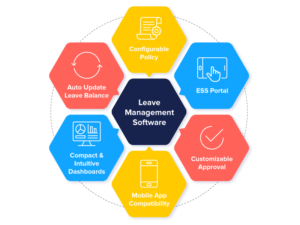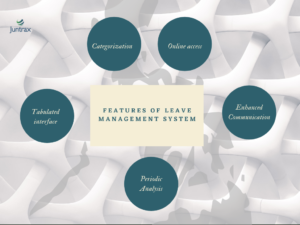6 Reasons to Make Leave Management System a Priority


Leave management is an integral part of daily business operations and might appear to be a simple task. Indeed, it is if you have only a few employees.
However, managing leave becomes increasingly taxing and eventually exceedingly complicated as your workforce grows.
A well-implemented leave management system helps streamline the process of tracking and approving time off, ensuring that your workforce remains balanced and operations continue smoothly.
Imagine the chaos in an office where multiple team members take unplanned leaves simultaneously, causing project delays and overburdening other employees.
This is why incorporating a leave management system into your business is essential to manage risks and avoid costs.
In this article, we will explore how investing in an employee leave management system can help you enhance your business operations.
What is Leave Management?

Leave management is the process by which organizations handle employees’ requests for time off from work. This includes various types of leave, such as vacations, public holidays, medical leave, and family-related absences.
It is an essential component of benefits administration that every company must effectively manage.
Key Components of Leave Management

Leave management systems are designed to streamline and optimize the process of managing employee time-off requests. These systems encompass a variety of activities and policies that aim to ensure efficient and fair handling of employee leave.
Here are the key components of a comprehensive leave management system:
- Creating Leave Policies: This involves defining the different types of leave available (e.g., vacation, sick leave), establishing leave balances, determining how often employees can take leave, outlining their entitlements, and specifying methods for encashment.
- Communicating Policies: Organizations must inform employees about the leave policies that apply to them, which may vary based on their job roles or groups within the company.
- Designating Approval Managers: Companies need to assign specific managers the authority to approve or reject leave requests, ensuring a streamlined process for handling these requests.
- Calculating Leave at Month-End: At the end of each month, it’s important to account for the leave taken by employees when calculating total working hours and any remaining leave balances.
Top Reasons to Make Leave Management System a Priority

The global Leave Management System market was valued at approximately USD 1.1 billion in 2022 and is projected to reach USD 1.62 billion by 2030, growing at a compound annual growth rate (CAGR) of 9.69% from 2024 to 2030.
These statistics highlight the increasing importance of leave management systems in organizations.
Here are the top 6 reasons why you should consider implementing a leave management system in your organization:

Improves Operational Efficiency
A leave management system significantly enhances operational efficiency by automating and streamlining the leave request and approval process.
Instead of juggling spreadsheets and emails, employees can submit their leave requests through a centralized portal, allowing managers to approve them quickly and consistently. This automation reduces the administrative burden on HR teams, who no longer need to track leave balances or update records manually.
For example, a company that implemented a leave management system saw a 30% reduction in administrative tasks, freeing up HR professionals to focus on strategic initiatives.
Moreover, a leave management system ensures accuracy in tracking leave, reducing errors and discrepancies that can lead to payroll issues and employee dissatisfaction.
Enhanced Legal Compliance
Leave management systems help maintain detailed logs of employee leave by ensuring accurate record-keeping. This is crucial for adhering to legal requirements like those set by the Fair Labor Standards Act (FLSA) in the United States.
For instance, the FLSA instructs diligent tracking of hours worked and leave taken. An automated system not only simplifies this process but also reduces the risk of human error, thereby minimizing potential legal repercussions.
Moreover, adherence to regional leave policies becomes seamless with a tailored leave management system.
Different regions enforce specific entitlements, such as the European Union’s Working Time Directive, which mandates a minimum of four weeks of paid annual leave.
A well-configured system ensures these entitlements are correctly allocated, preventing unintentional breaches of the law.
Boosts Employee Morale
A well-implemented leave management system can significantly boost employees’ morale by offering transparency and fairness in managing their leave policies.
When employees know that their leave requests are handled efficiently and equitably, it fosters a sense of trust and satisfaction within the team.
For example, an automated system that clearly tracks leave balances and approvals eliminates the uncertainty and potential biases often accompanying manual processes.
This transparency ensures that every employee feels valued and fairly treated, which is crucial for maintaining high morale.
Moreover, a leave management system provides the flexibility that modern employees crave. By checking leave balances, submitting requests, and receiving approvals in real-time, employees can more effectively plan their personal time.
Facilitates Better Resource Planning
Effective resource planning is the backbone of any successful organization, and a leave management system plays a pivotal role in this process.
By providing real-time data on employee availability, these systems enable managers to make informed decisions about staffing and workload distribution.
For example, suppose a project deadline coincides with multiple team members’ planned leaves. In that case, the system can alert managers well in advance, allowing them to adjust schedules or reassign tasks to ensure seamless operations.
This proactive approach not only prevents last-minute scrambles but also enhances overall productivity.
Moreover, accurate leave tracking aids in forecasting and long-term planning. A leave management system allows managers to easily identify patterns and trends, such as peak leave periods or recurring absences.
This information is invaluable for anticipating staffing needs and avoiding potential resource shortages.
For example, if historical data indicates a high number of leave requests during the holiday season, managers can plan accordingly by hiring temporary staff or redistributing workloads.
Provides Valuable Insights
A solid leave management system doesn’t just streamline administrative tasks; it also serves as a powerful tool for gaining valuable insights into workforce dynamics.
Organizations can make strategic decisions that enhance overall efficiency and employee satisfaction by analyzing leave patterns and identifying trends.
For example, a leave management system can highlight recurring patterns, such as increased leave requests during specific seasons or months. This information enables managers to anticipate potential staffing shortages and plan accordingly, whether by hiring temporary staff or redistributing workloads.
Moreover, the data gathered from leave management systems can reveal deeper insights into employee behavior and well-being.
For instance, frequent leave requests from a particular department may indicate underlying issues such as high-stress levels or workplace dissatisfaction.
Enhances Data Security and Privacy
Safeguarding sensitive employee information is essential in today’s digital age, and a leave management system is equipped to do just that.
One key advantage of a leave management system is its ability to comply with stringent data protection regulations, such as GDPR or CCPA.
With robust encryption and access controls, these systems are designed to handle vast amounts of sensitive data, from personal details to leave balances. This ensures that only authorized personnel can view or modify this information, significantly reducing the risk of data breaches.
For instance, a leave management system employs multi-factor authentication (MFA) to verify users’ identities, adding an extra layer of security beyond a password. This makes it considerably harder for unauthorized users to access sensitive employee data.
Additionally, regular security audits and compliance checks are often built into these systems, ensuring continuous adherence to the latest security standards.
Bottom Line
Integrating a leave management system into your business operations streamlines administrative tasks, ensures compliance, elevates employee morale, improves planning, and delivers valuable insights. It’s also effective for managing chronic lateness.
The best leave management software tackles issues related to time off, absenteeism, and scheduling, making it an essential investment for organizations seeking to enhance workforce management.
By adopting a leave management system, companies can gain a competitive edge through increased operational efficiency and higher employee satisfaction.
4 thoughts on “6 Reasons to Make Leave Management System a Priority”
Comments are closed.
Very clear and helpful article. I am already using an HR Software and these insights helped me a lot to improve my strategies towards employee management. Thanks
Thank you!
What a wonderful blog! Leave management is indeed the need of the hour for every enterprise.
My spouse and I stumbled over here coming from a different web page and thought I might as well check things out.
I like what I see so now i am following you. Look forward to going over your web page repeatedly.